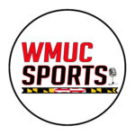By Max Marcilla
1: ‘True’ Away game
It’s usual for big-name teams to play most of their nonconference games either at home or at a neutral site, but the Terps will only get one chance to play in front of a hostile crowd before Big Ten action. That game will be at the Carrier Dome against the Syracuse Orange. ‘Cuse is a storied basketball program that had the second-highest average home attendance last season.
Maryland will also play a road game at Nassau Coliseum in New York against Stony Brook, but the Coliseum is not the Seawolves’ usual home court. The Carrier Dome will be Maryland’s best chance to prepare for the adversity of a Big Ten road game.
2: Opponents from Power 6 conferences
In college basketball, it is widely regarded that there are six ‘major’ conferences: the ACC, Big Ten, Big 12, Pac-12, SEC and Big East. Maryland is only guaranteed to play two teams in those conferences, Butler and Syracuse, although they may play a third if they meet TCU in the Emerald Coast Classic.
Butler is undoubtedly the best foe on Maryland’s nonconference schedule, as the Bulldogs are a top 25-caliber team that won two games in the 2017 NCAA Tournament. While Butler lost a few key role players, and has a new head coach, it also returns senior Kelan Martin, one of the better players in the country.
4: Teams Maryland will play from the DMV
Maryland has done such a good job recruiting from the DMV (D.C., Maryland, Virginia) area — landing prospects such as Anthony Cowan and Darryl Morsell — that it has made an evident effort to play local colleges and universities as well.
This year, the Terps will play Randolph-Macon College (Va.), Maryland Eastern Shore (Md.), Catholic University (D.C.) and UMBC (Md.). Maryland played five different teams from the DMV last year, most notably Georgetown, which was left off the schedule after back-to-back classic games against the Terps.
6: Single-digit nonconference wins last season
Although the Terrapins had a relatively easy nonconference schedule to open the 2016-17 season, there were plenty of games that indicated that the Terps were far from invincible.
Maryland finished the nonconference slate 12-1, but won six games by single-digit points, including a six-point victory over American, an overtime win against Richmond and a five-point win at home against Towson.
The Terps had three games in which they won by more than 20 points, outliers compared to their other nonconference games. Excluding those three, Maryland’s average margin of victory in nonconference meetings was just 4.6 points.
That is why you play the game.






